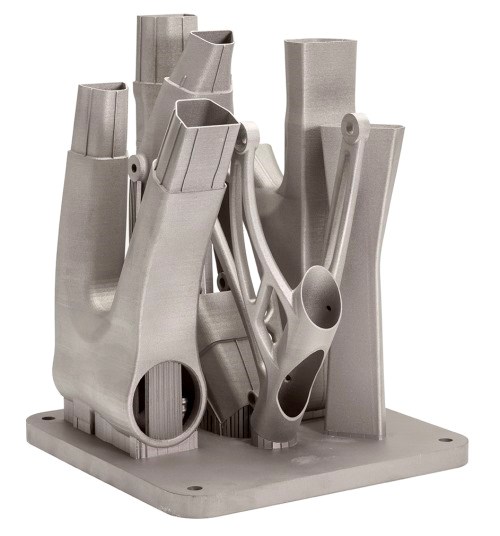Why Make a Bike Frame through Additive Manufacturing?
One reason to make a bike frame through additive manufacturing processes is that unnecessary weight disappears. The 3D printed frame is two-thirds the weight of the previous version. Other advantages relate to design freedom and the performance of the additively applied alloy.

Renishaw has collaborated with the UK’s Empire Cycles to produce what the two companies say is the world’s first 3D printed metal bike frame. The titanium frame, manufactured using Renishaw’s additive manufacturing machine, is 33 percent lighter than the original frame that Empire started with.

Components were built simultaneously within a single additive build,
then assembled to create the frame.
However, the benefits from additive manufacturing go well beyond weight savings. In an article about its work with Empire, Renishaw offered a list of the many advantages the bike maker realizes by growing the bike frame through 3D printing. Those advantages include:
1. Rapid iterations, and the flexibility to make design improvements right up to production.
2. The ability to derive shapes from topological optimization, using software analysis to place material only where it is needed for the strength and performance of the part.
3. Customization, because one-offs can be made as easily as production batches.
4. The freedom to grow hollow structures for weight and material savings.
5. The option to produce complex shapes that include internal strengthening features.
6. The ability to build in special features, such as the rider's name.
Read more about the 3D printed bike frame.















